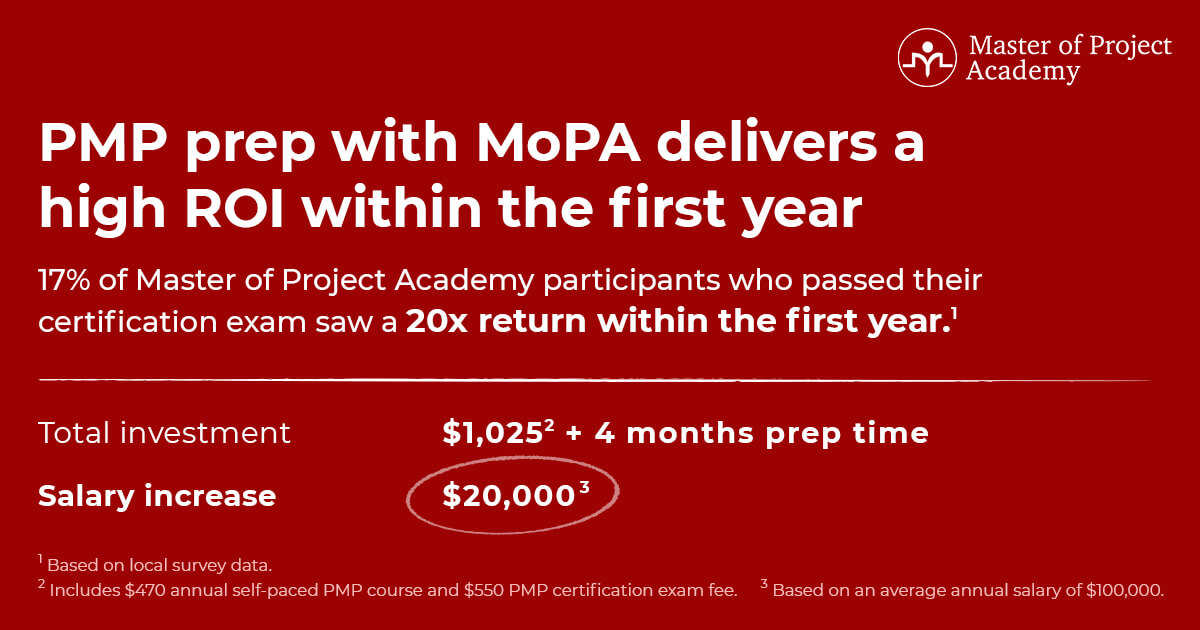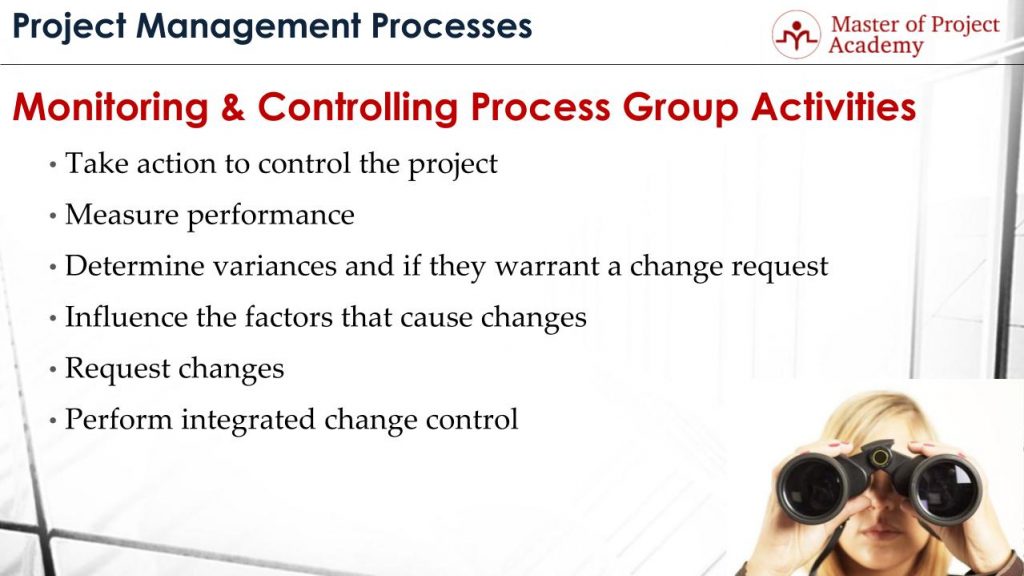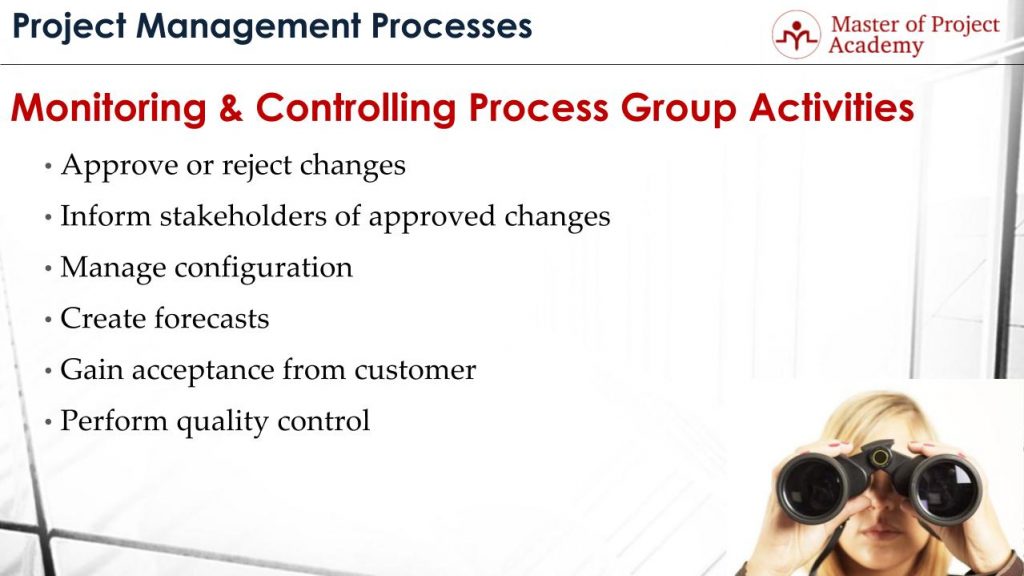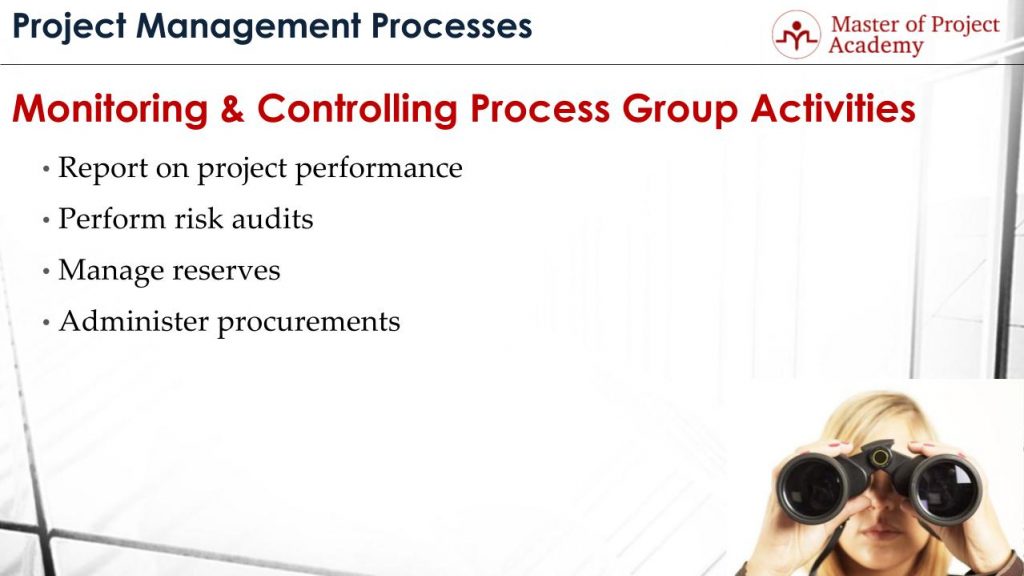Every project has a life cycle. According to the PMBOK guide (Project Management Body of Knowledge) During this life cycle, there are several phases called ‘process groups‘. Each of these process groups has a different and crucial objective, which helps to produce desired outcomes in a project. Project monitoring and controlling process group activities help project managers and team members to keep the project on track. Project monitoring and controlling, unlike the other phases, is done from the beginning until the end of the project. These monitoring and controlling project process activities check whether the project is going as planned and whether there are any deviations from the baseline. So this process group covers all the other four process groups.
- Check out our PMP® Online Class Virtual Training that will help you fully prepare for the PMP certification exam!
- You can also check out our self-paced PMP® Certification Training.
Do you want to hear what our students say about our PMP courses? You can watch this video!

Why the project monitoring and controlling phase is important?
For a successful project, there are some best practices to implement good project monitoring & controlling. Because monitoring and controlling activities check if there are deviations from the expected results of the project progress. So what kind of activities should be done during this important phase? In this article, we will list the project monitoring and controlling process group best practices one by one.
Attend our 100% Online & Self-Paced One-Hour Free PMP Training.
Note that, project management processes are documented and controlled with the help of project management templates. You can see sample free project management templates to have an idea of how they work.
- Do you want to improve your business decision-making? Check out our new Financial Forecasting and Modeling Training course!
- Data driven analytics can be very beneficial for your career journey! Check out our brand new course to gain data analytics AI skills: Introduction to Analytics and AI
The 16 Best Practices for Project monitoring and controlling process

Project monitoring and controlling step #1: Take action to control the project
Necessary steps, control points, and actions are taken to monitor and control the project. These actions provide if the project is deviating from the planned baseline.
Project monitoring and controlling step #2: Measure performance
You should measure the planned performance in order to check whether the project is going well. For instance, the cost performance of the project will give an indication of whether the planned budget will be sufficient to complete the project. Schedule performance of the project will give an indication of whether the planned schedule and dates can be reached.
Step #3: Determine variances and if they warrant a change request
If there is a lot of variance from the baseline, for instance, if it is expected that the project duration will exceed the planned duration by 20%, then actions must be taken to meet the project targets.
Project monitoring and controlling step #4: Influence the factors that cause changes
Changes are inevitable in a project. But, preventive actions can be taken to influence the factors that cause changes. For instance, a detailed scope and requirement clarification with the customer will reduce the changes that will be coming from the customer.
Step #5: Request changes
If there is a deviation from the planned values, then a change can be requested to meet the planned values again.
Project monitoring and controlling step #6: Perform integrated change control
Changes in a project must be implemented in an integrated manner. Because a small change in one aspect of the project might impact the overall project. Performing an integrated change control evaluates the changes and their impacts on the project. Then, a proper change implementation is planned to minimize the risk of changes.

Step #7: Approve or reject changes
Project monitoring and controlling process may approve or reject changes. Changes are evaluated by the change control board and if this board rejects the change, it won’t be implemented. If a change is approved, project plan revisions must be done and change should be implemented properly.
Project monitoring and controlling step #8: Inform stakeholders of approved changes
If the decision of the change control board is to approve a change. This must be communicated to the stakeholders. Because, the previous plan, scope, and targets have a change. So the stakeholders must be notified about this change.
Project monitoring and controlling step #9: Manage configuration
The configuration of a project describes the meaningful and properly working combination of different modules or parts. In order to ensure healthy project progression, the configuration is managed.

Step #10: Create forecasts
Project monitoring and controlling process group activities create forecasts. What will be the budget for the project on completion? What will be the end date of the project if the project performs as it performed till now? These types of forecasts help to see how far the project is from its targets.
Project monitoring and controlling step #11: Gain acceptance from the customer
Once the project deliverables are completed, they are presented to the customer. If the project deliverables meet the requirements agreed with the customer, in the beginning, the customer accepts the project and the closing phase is triggered.
Project monitoring and controlling step #12: Perform quality control
Quality control activities check the quality attributes of the delivered outputs. For instance, the product of a project might meet the budget and schedule targets. But the quality requirements might not meet the customers’ expectations. In this case, the project will be considered a failure as well. Therefore, performing quality control is important.

Step #13: Report on project performance
Since forecasting and project performance is measured during monitoring and controlling, project performance reports are sent to relevant stakeholders during this phase as well.
Project monitoring and controlling step #14: Perform risk audits
Risks may affect a project drastically. Therefore, each anticipated risk must be documented, and risk response strategies for each risk must be planned in case a risk occurs.
Project monitoring and controlling step #15: Manage reserves
Reserves are planned to accommodate the costs of risks and unexpected situations in projects. For instance, if the project budget is 100,000 USD, a 10% reserve can be planned to accommodate the impacts of risks. Or, if the project duration is 12 months, an additional 2 months can be planned as a buffer to overcome any kind of risks that might occur during the project. These reserves are managed in the monitoring and controlling phase.
Step #16: Administer procurements
Tools, equipment, or resources can be outsourced from a supplier during a project. Administration of these purchases, outsourcing, and leasing activities are done during the monitoring and control phase of a project.
If a successful monitoring and controlling process can be implemented, the whole project has a better chance to be a success. So the outcomes of closing process group activities will be as planned in the project planning phase.


